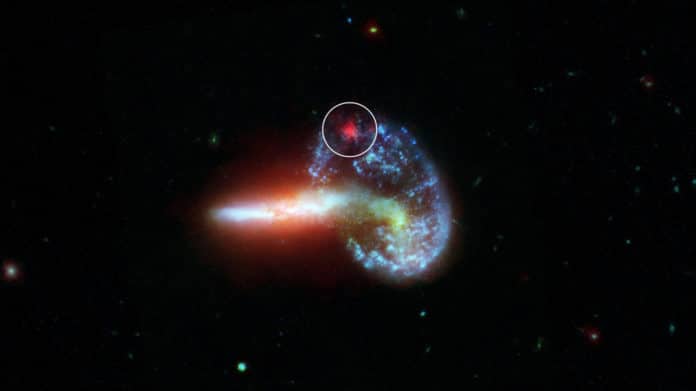Star explosion dramatically generates light shows, known as a supernova. Such supernova explosions often go unnoticed.
In a new study using Spitzer Space Telescope, researchers reported about hidden supernovae. The telescope detected five never been seen before supernovae that going undetected in optical light. Spitzer detected these supernovae in dusty galaxies.
According to the researchers, it’s a testament to Spitzer’s discovery potential that the telescope was able to pick up the signal of hidden supernovae from these dusty galaxies.
NASA‘s Spitzer Space Telescope was used to offer a unique, infrared view of the universe. It provided a glance to regions of space that are hidden from optical telescopes. Because of infrared light, it was able to look into dust clouds that block optical light.
To find these hidden supernovae, scientists looked at Spitzer’s observations of 40 dust-choked galaxies, known as luminous and ultra-luminous infrared galaxies (LIRGs and ULIRGs, respectively). Based on the number they found in these galaxies, they confirmed that supernova occurs as frequently as expected.
These newly detected supernovae are the type of ‘core-collapse supernovae’, involving giant stars with at least eight times the mass of the Sun.
Ori Fox, a scientist at the Space Telescope Science Institute in Baltimore, Maryland, and lead author of the new study, said, “These results with Spitzer show that the optical surveys we’ve long relied on for detecting supernovae miss up to half of the stellar explosions happening out there in the universe. It’s excellent news that the number of supernovae we see with Spitzer is statistically consistent with theoretical predictions.”
Galaxies in the distant universe are younger: their star formation rate is higher, and they tend to have higher amounts of dust. This dust absorbs and scatters optical and ultraviolet light, preventing it from reaching telescopes. So researchers have long reasoned that the missing supernovae must exist and are just unseen.
Fox said, “Because the local universe has calmed down a bit since its early years of star-making, we see the expected numbers of supernovae with typical optical searches. The observed supernova-detection percentage goes down, however, as you get farther away and back to cosmic epochs where dustier galaxies dominated.”
“The dust in LIRGs and ULIRGs absorbs optical light from objects like supernovae but allows infrared light from these same objects to pass through unobstructed for telescopes like Spitzer to detect.”
Study co-author Alex Filippenko, a professor of astronomy at the University of California, Berkeley, said, “It was especially fun for several of our undergraduate students to meaningfully contribute to this exciting research. They helped answer the question, ‘Where have all the supernovae gone?'”
Supernovae produce heavy elements, like most metals. Those elements are necessary for the formation of rocky planets as well as biological beings. In other words, supernova explosion rates fill in as significant check-in models of star formation and the creation of heavy elements in the universe.
Fox said, “Our study has shown that star formation models are more consistent with supernova rates than previously thought. And by revealing these hidden supernovae, Spitzer has set the stage for new kinds of discoveries with the Webb and Roman space telescopes.”
Journal Reference:
- Ori D Fox et al. A Spitzer survey for dust-obscured supernovae. DOI: 10.1093/mnras/stab1740
